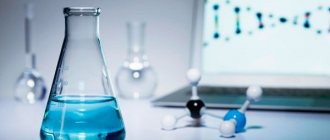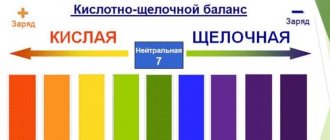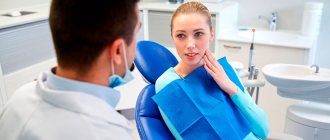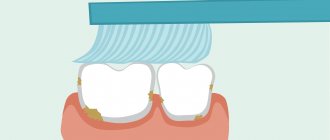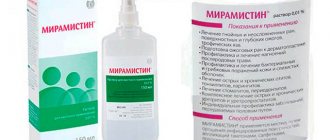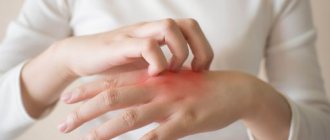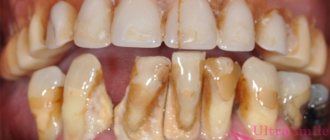Comparison of the effectiveness of Miramistin and Okomistin
The effectiveness of Miramistin is quite similar to Okomistin - this means that the ability of the drug substance to provide the maximum possible effect is similar.
For example, if the therapeutic effect of Miramistin is more pronounced, then using Okomistin even in large doses will not achieve this effect.
Also, the speed of therapy - an indicator of the speed of therapeutic action - is approximately the same for Miramistin and Okomistin. And bioavailability, that is, the amount of a drug reaching its site of action in the body, is similar. The higher the bioavailability, the less it will be lost during absorption and use by the body.
Scope of application
The significant difference between Miramistin and Hydrogen Peroxide is that the latter remedy should not be applied to the mucous membranes. It is especially dangerous to use it for gargling in a child. For the treatment of ENT logans, only Miramistin is used. In extreme cases, it can be replaced with Chlorhexidine, but under no circumstances should you irrigate the throat and nasal mucosa with Peroxide.
The antiseptic Miramistin is actively used in gynecology. Peroxide is not included in the list of drugs for the treatment of this area. A similar rule works for ophthalmology. For the purpose of treating the organs of vision, Miramistin can be used, but hydrogen peroxide cannot be used.
Comparison of the safety of Miramistin and Okomistin
The safety of a drug includes many factors.
At the same time, in Miramistin it is quite similar to Okomistin. It is important where the drug is metabolized: drugs are excreted from the body either unchanged or in the form of products of their biochemical transformations. Metabolism occurs spontaneously, but most often involves major organs such as the liver, kidneys, lungs, skin, brain and others. When assessing the metabolism of Miramistin, as well as Okomistin, we look at which organ is the metabolizing organ and how critical the effect on it is.
The risk-benefit ratio is when the prescription of a drug is undesirable, but justified under certain conditions and circumstances, with the obligatory observance of caution in use. At the same time, Miramistin does not have any risks when used, just like Okomistin.
Also, when calculating safety, it is taken into account whether only allergic reactions occur or possible dysfunction of the main organs. In other matters, as well as the reversibility of the consequences of using Miramistin and Okomistin.
Hydrogen peroxide
The active ingredient is hydrogen peroxide . Available in solution form. Belongs to the group of antiseptic agents. Has an antiseptic effect.
Upon contact with damaged mucous membranes, active oxygen is released. Due to this, you can see the reaction in the form of the formation of foam and bubbles. The use of the product softens and separates necrotic tissue, and also eliminates blood clots and pus.
Indications for use are:
- Purulent wounds.
- Inflammation of the mucous membranes.
- Bleeding (including nasal bleeding).
- Disinfection of the oral cavity (for stomatitis, sore throat).
- Wax plugs in the ears.
Hydrogen peroxide should not be used for:
- Diseases of the liver and kidneys.
- Hypertiform dermatitis.
- Hyperthyroidism.
When wounds appear, a cotton swab is moistened with a solution of hydrogen peroxide, and then the area is treated. Can also be treated using jet irrigation.
A 3% solution is used for external use. For rinsing and treating mucous membranes, a concentration of 1-3% . 0.25% is applied to the mucous membranes . If a 3% solution , then you need to dilute it with water in a ratio of 1:11 .
Comparison of addiction between Miramistin and Okomistin
Like safety, addiction also involves many factors that must be considered when evaluating a drug.
So, the totality of the values of such parameters as “o syndrome” in Miramistin is quite similar to the similar values in Okomistin. Withdrawal syndrome is a pathological condition that occurs after the cessation of intake of addictive or dependent substances into the body. And resistance is understood as initial immunity to a drug; in this it differs from addiction, when immunity to a drug develops over a certain period of time. The presence of resistance can only be stated if an attempt has been made to increase the dose of the drug to the maximum possible. At the same time, Miramistin has quite a small amount of “syndrome”, however, the same as Okomistin.
Miramistin
Miramistin is an antiseptic drug for local and external use. Endowed with a wide spectrum of antibacterial action, including nosocomial microbial strains resistant to antibiotics. The drug has a pronounced bactericidal (destructive for bacteria) effect on gram-positive (Staphylococcus spp., Streptococcus spp.) and gram-negative (Escherichia coli, Klebsiella spp., Pseudomonas aeruginosa) bacteria. It has a fungicidal effect on ascomycetes of the genera Penicillium and Aspergillus, yeast (Torulopsis gabrata, Rhodotorula rubra) and yeast-like (Candida albicans, Candida krusei, Candida tropicalis, Malassezia furfur, Pityrosporum orbiculare) fungi, dermatophytes (Epidermophyton Kaufman-Wolf, Epidermophyton floccosum, Microsporum canis , Microsporum gypseum, Trichophyton mentagrophytes, Trichophyton rubrum, Trichophyton schoenleini, Trichophyton violacent, Trichophyton verrucosum) and other monocultures and associations of pathogenic fungi, including fungal microflora with resistance to chemotherapy drugs. It has antiviral activity against complex viruses (human immunodeficiency virus, herpes viruses, etc.). The drug also acts on pathogens of sexually transmitted infections (Neisseria gonorrhoeae, Chlamydia spp., Trichomonas vaginalis, Treponema spp., etc.). Effectively prevents infections of burns and open wounds. Stimulates recovery processes. Activates the occurrence of protective reactions at the site of direct use due to the activation of phagocytosis. The presence of pronounced hyperosmolar activity in Miramistin gives the drug a number of useful properties. Thus, this antiseptic is able to reduce wound and peri-wound inflammation, absorb purulent exudate, promoting the formation of a dry scab. At the same time, miramistin does not damage granulations and normal skin cells, and also does not suppress marginal epithelialization. The drug does not have irritant or allergen properties. When used topically, Miramistin is not absorbed by the skin and mucous membranes and does not enter the systemic circulation.
When used in traumatology, combustiology, surgery for therapeutic and prophylactic purposes, wound and burn surfaces are irrigated, wounds and fistula tracts are tamponed, and gauze swabs soaked in miramistin are secured. This procedure is carried out 2-3 times a day for 3-5 days. One of the most effective is the method of active drainage of wounds with a daily consumption of the drug up to 1 liter. When used in obstetric and gynecological practice, in order to prevent postpartum infection, vaginal irrigation is performed for 5-7 days before childbirth and in the postpartum period. The consumption of the drug for one such procedure is 50 ml, the exposure time is 2 hours. If the birth took place by cesarean section, then immediately before the surgical intervention the vagina is treated, during the procedure the uterine cavity is treated along with the incision made, and after the operation tampons moistened with miramistin are inserted into the vagina for 2 hours every day for 1 week. Treatment of diseases of inflammatory origin is carried out in the form of two-week courses by introducing tampons into the vagina and/or through medicinal electrophoresis. To prevent sexually transmitted diseases, Miramistin will be effective if it is used no later than 2 hours after sexual intercourse. To do this, using the included urological applicator, the contents of the bottle are introduced into the urethra for 2-3 minutes: 2-3 ml (for men), 1-2 ml and an additional 5-10 ml into the vagina (for women). The skin of the inner thighs, peripubic area and external genitalia is also treated. After this procedure, it is recommended to refrain from urinating for 2 hours. In combination therapy for urethritis, Miramistin is injected into the urethra 2-3 ml 1-2 times a day for 10 days. For inflammation of the oral mucosa and gums, as well as for periodontitis, Miramistin is used in the form of mouth rinses of 10-15 ml of solution 3-4 times a day.
Comparison of side effects of Miramistin and Okomistin
Side effects or adverse events are any adverse medical event that occurs in a subject after administration of a drug.
Miramistin's side effects are almost the same as Okomistin's. They both have few side effects. This implies that the frequency of their occurrence is low, that is, the indicator of how many cases of an undesirable effect of treatment are possible and registered is low. The undesirable effect on the body, the strength of influence and the toxic effect of Miramistin are similar to Okomistin: how quickly the body recovers after taking it and whether it recovers at all.
What to choose?
The main similarity between antiseptics is that they are both available in solution form. However, Miramistin, in addition to the solution, has the form of an ointment and a spray. They have different active components , but still belong to the same pharmacological group . However, there is a significant difference in their mechanism of action.
Miramistin is a clear antiseptic solution that foams when shaken. It is capable of destroying harmful bacteria, viruses and fungi. When applied, the skin and mucous membranes are softly enveloped. Miramistin performed well even in the presence of purulent wounds. It has virtually no side effects or contraindications. However, the obvious difference is that it can only be used by children from 3 years of age.
Hydrogen peroxide is a colorless antiseptic solution for treating wounds on the skin. It is used to treat the umbilical wound in newborns. Peroxide has no age restrictions. Therefore, Miramistin is safer for irrigating the mucous membranes of children. But when treating wounds on the skin, you should give preference to hydrogen peroxide.
There is also a significant difference that hydrogen peroxide is not safe to apply to mucous membranes, especially for children. Despite the fact that such an application is still possible.
Miramistin is actively used in gynecology. While Peroxide cannot be used in this area. A similar rule works for ophthalmic diseases.
Both drugs are used in surgical practice. It is allowed to use them simultaneously, which is not prohibited by doctors. However, for burns it is better to use Miramistin. It does not cause burning and dryness, unlike its counterpart.
Miramistin has the following advantages:
- Wide spectrum of action.
- Several dosage forms.
- Does not cause burning.
- It has virtually no contraindications or side effects.
- Capable of fighting STDs.
Hydrogen Peroxide also has positive aspects:
- Low cost.
- It can be used even for newborn children.
- Able to dry wet wounds.
- Effective in the fight against microbes.
- Able to stop bleeding.
- Medical instruments can be disinfected.
Hydrogen peroxide is produced in Russia. The cost of the solution does not exceed 30 rubles . Miramistin is also produced in Russia, but its cost is much higher and is about 300 rubles .
Comparison of ease of use of Miramistin and Okomistin
This includes dose selection taking into account various conditions and frequency of doses. At the same time, it is important not to forget about the release form of the drug; it is also important to take it into account when making an assessment.
The ease of use of Miramistin is approximately the same as Okomistin. However, they are not convenient enough to use.
The drug ratings were compiled by experienced pharmacists who studied international research. The report is generated automatically.
Last update date: 2020-12-13 10:42:47
Comparative analysis
You should not use Miramistin and Hydrogen Peroxide at the same time on your own. Your doctor will dispel any doubts about the possibility of using antiseptics. After a comparative analysis, we can say:
- You can rinse your mouth with Miramistin, but not with Peroxide;
- Miramistin is more expensive, which makes this drug less accessible;
- Peroxide is recognized as a stronger contender in the fight against microbes;
- Peroxide dries out wet wounds;
- Miramistin does not stop bleeding, and Peroxide helps to clog a bleeding wound.
Which of these remedies is better can only be said taking into account the individual characteristics of the patient and the indications for the use of the antiseptic.
Conclusion
Thus, it is impossible to say unambiguously which drug is more effective. It is necessary to take into account the individual characteristics of the patient , as well as the purpose for which the use of antiseptic is required. We can definitely say that it is better to use hydrogen peroxide to treat the skin of young children. If treatment of mucous membranes is required, then Miramistin should be used. In other cases, the antiseptic is prescribed by a doctor, depending on the patient’s disease.
Medicine and healthComment

